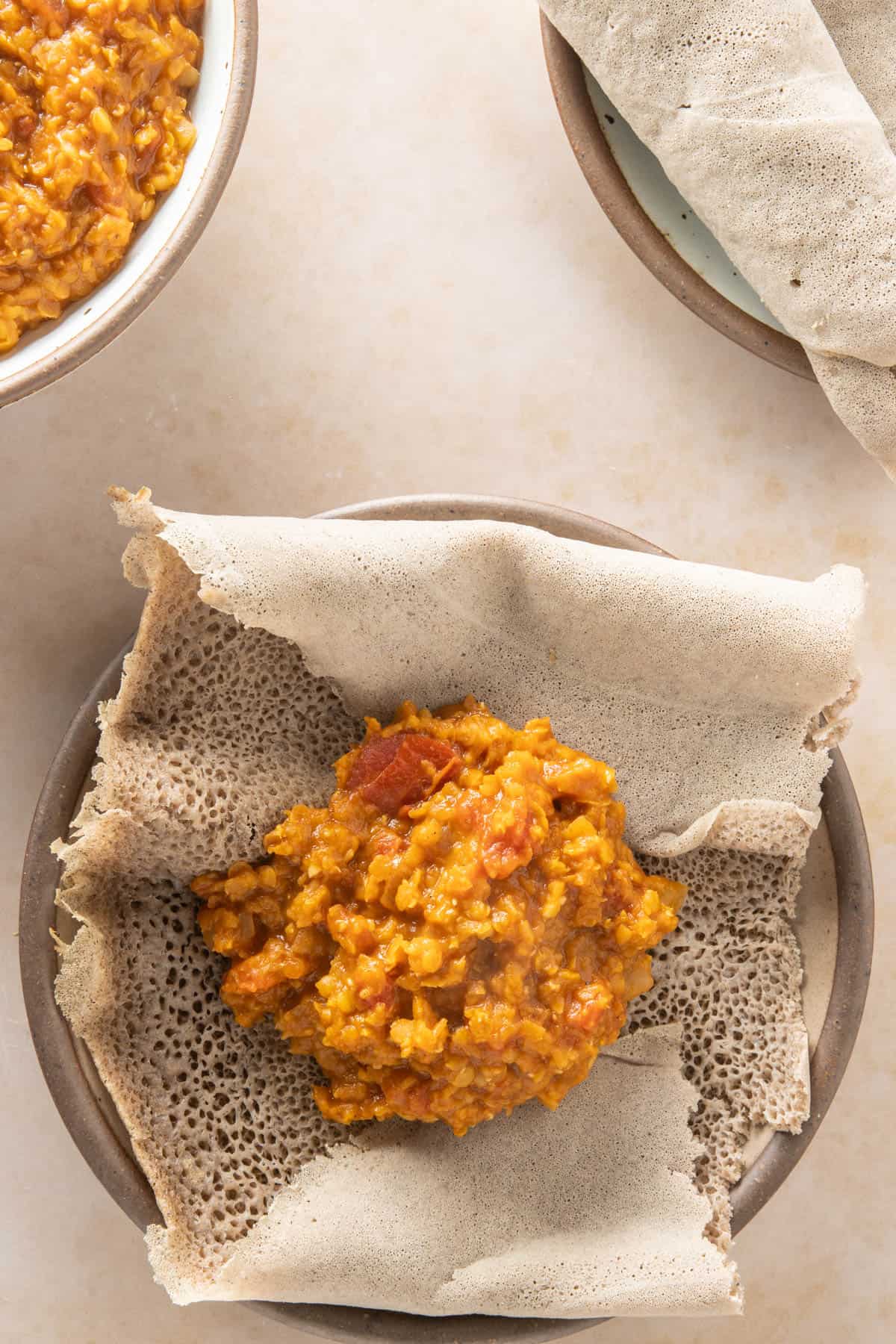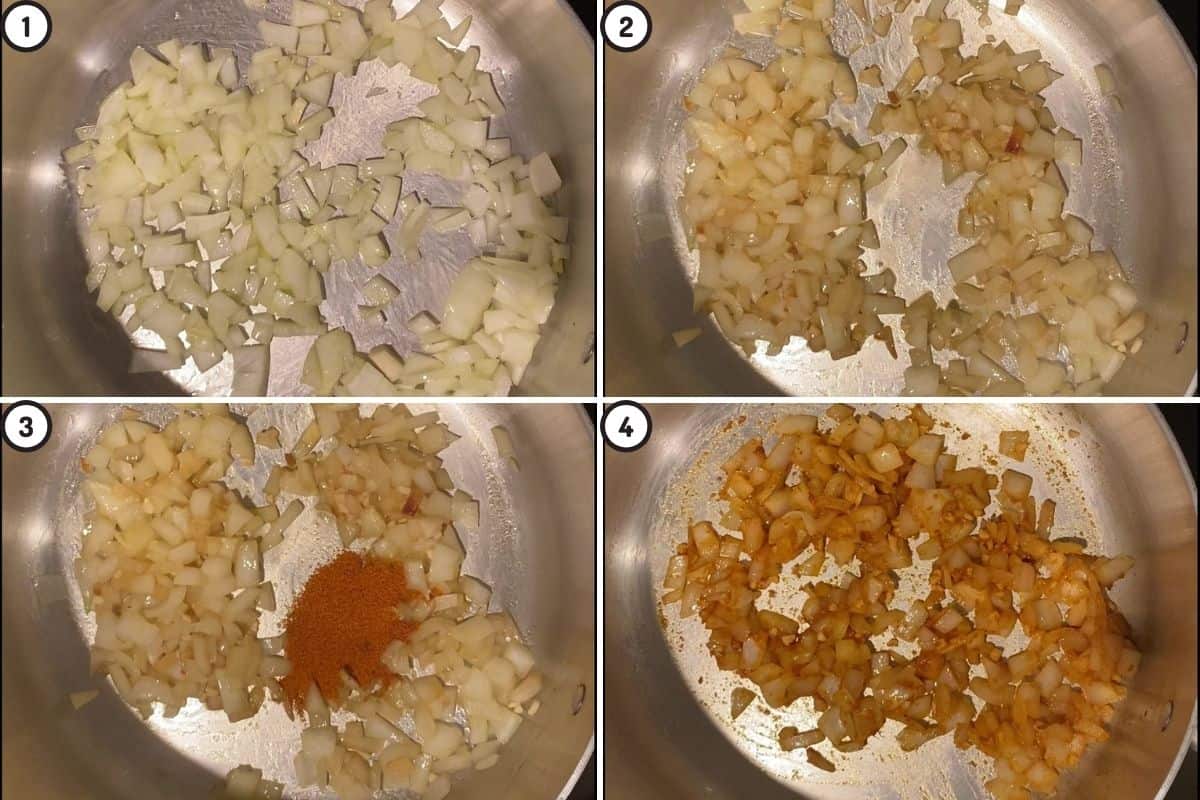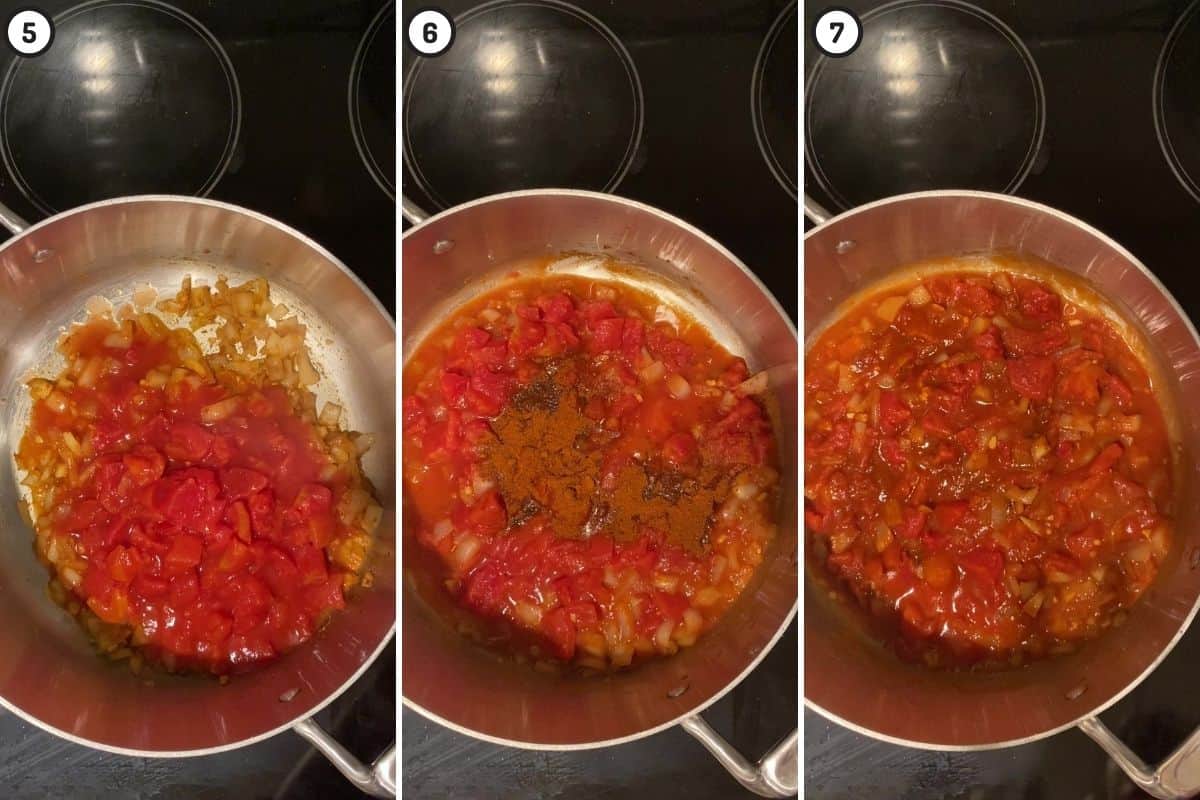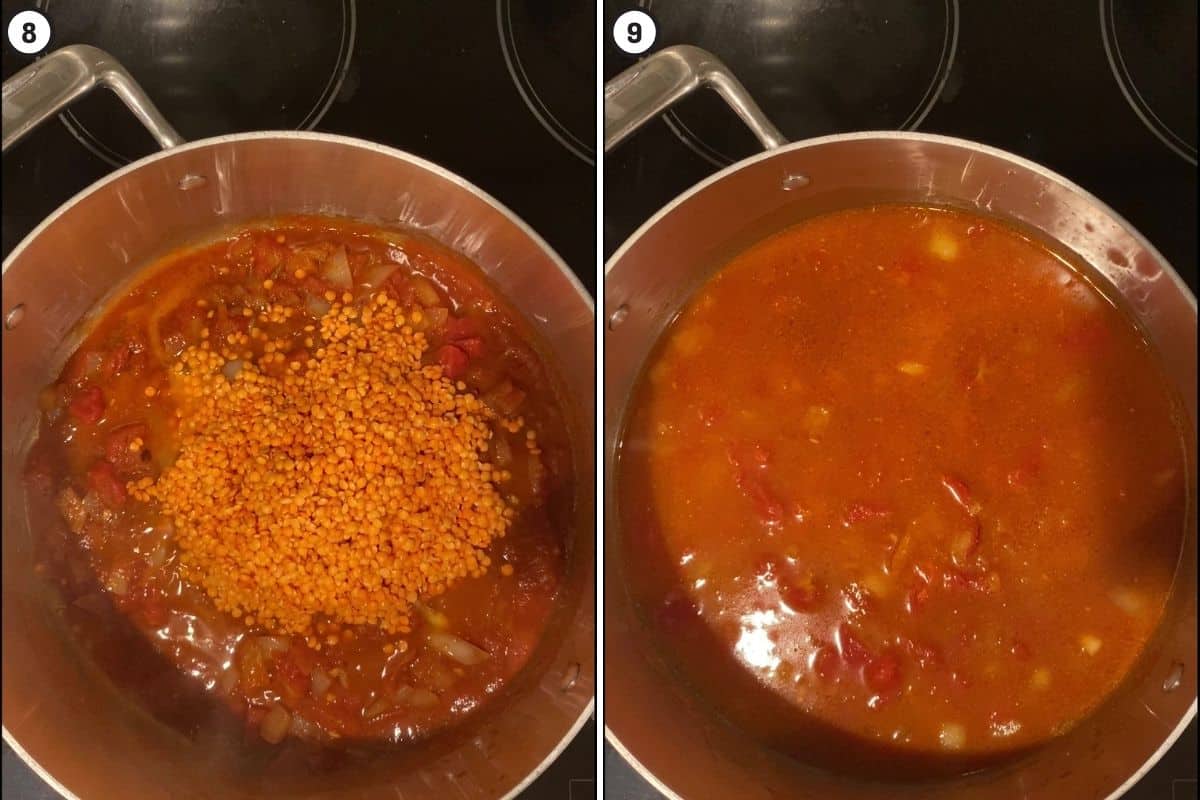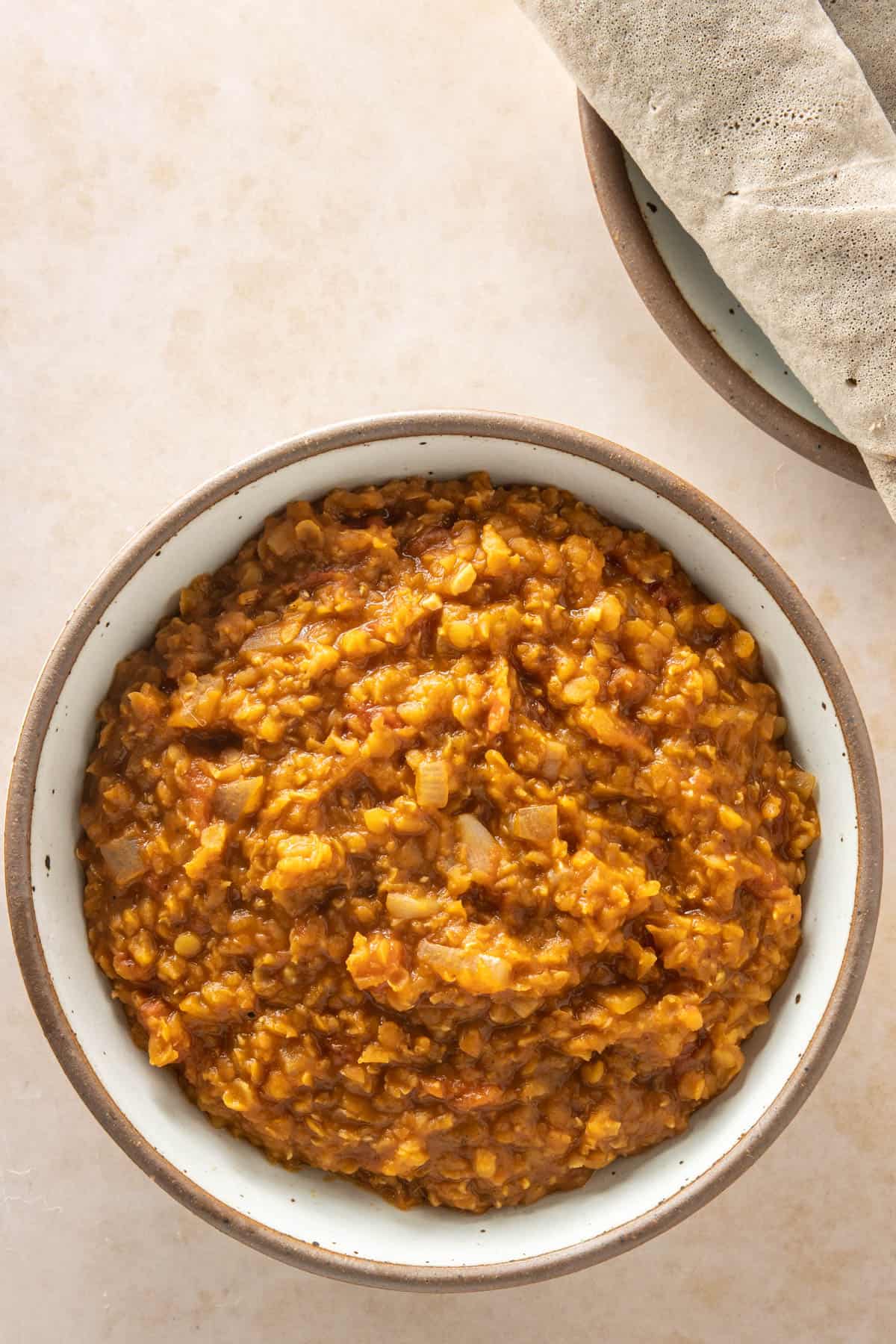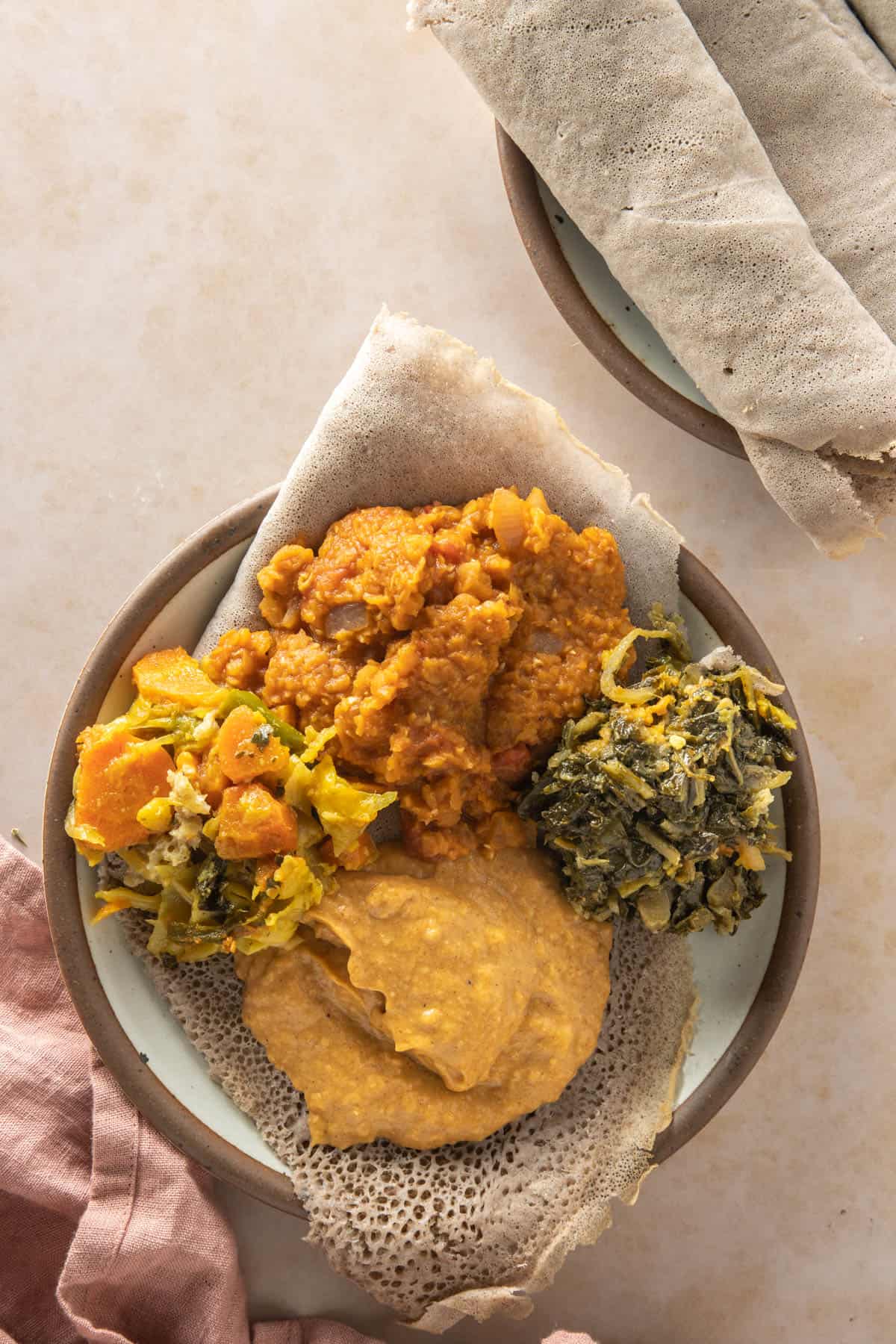This post contains helpful tips and tricks! If you’re in a rush, please use the “Jump to Recipe” above!
💭 Why you’ll love this recipe
Vegan, gluten-free and ready in 45 minutes. The traditional recipe sometimes uses nitter kibbeh, aka fat infused with spices. But this recipe is vegan and gluten-free and super quick to make for any meal! Nutritious, hearty and filling. The combination of red lentils and warm spices makes this a really comforting and hearty meal packed with proteins and nutrientsGreat for make-ahead. I’ve found that misir wot can be made-ahead, say over the weekend, and will stay fresh for up to a week. Great for batch cooking!
📋 Ingredients and notes
You’ll need olive oil, onions, garlic (minced or garlic paste), red chili powder, tomato paste and canned tomatoes, berbere powder, cardamom powder, split lentils, salt and water to make this recipe.
Notes and Variations
Using nitter kibbeh. This recipe is vegan, as written. However, if you want to infuse additional flavors, I suggest using nitter kibbeh in place of the olive oil. Nitter kibbeh is infused fat - toast warm spices, add the fat to it, and then strain the spices out so you get infused fat. Use of lentils. I suggest using red lentils, since it’s closest to traditional consistency, but Misir Wot works with almost any split lentils! Berbere substitute. If you can’t find berbere, I suggest using a teaspoon each of paprika, coriander powder, and red chili powder in place of a tablespoon of berbere. Adjust this to your desired spice levels!
📖 How to make Misir Wot
Start by cooking aromatics
Heat a large skillet or Dutch oven with neutral oil (like vegetable, avocado, or grapeseed). Then, add one finely diced onion and cook until it’s soft on medium heat. Then, add a tablespoon of minced garlic or garlic paste followed by red chili powder. Allow this to cook for a minute or two.
Add tomatoes and create the base of the stew
Next, add tomato paste and a small can of diced tomatoes (with no additional flavors) along with berbere spice. If you don’t have tomato paste handy, check out these tomato paste substitutes.. Sauté this for 3 to 4 minutes to release the “tinny” smell. Next, add the remaining olive oil along with the cardamom powder, then give this all a good mix. This is the base of the Misir Wot.
Add lentils and cook slowly until stew is done
Wash a cup of red lentils until the water runs clear and then add this to the pot along with two cups of water or vegetable broth. Add a pinch of salt to your taste. Bring this to a boil while still on medium heat. Then, turn the heat to a low-medium and allow the mixture to simmer at this heat for at least 15 to 20 minutes, covered. You might need to more water as you go along, so make sure to check every 5 minutes! The amount of time to reach desired consistency will depend on the age and type of your lentils, as well as the strength of the stove! When finished, it should have an almost creamy but not too soft consistency. Your Misir Wot is ready! Serve with hot injera and/or rice as well as other Ethiopian vegetarian dishes. Some of my favorites are Atakilt Wat (i.e., cabbage, carrots and potatoes) and Shiro Wat (i.e., chickpea stew). Oh, and a nice, fresh salad to enjoy a true Ethiopian vegetarian feast.
Choosing the right lentils. This recipe uses red lentils, also called Masoor dal or Masur dal, which is commonplace in both Ethiopia and India. However, any split lentils work!Washing lentils before cooking. This helps release any starches or dirt particles that might be present in the lentils. I typically sift through the lentils first and then wash them once or twice, but you don’t need to wash it as much as rice, for instance. Cooking lentils to desired consistency. Lentil texture is something that’s a bit of a personal preference. This recipe needs the lentils to be cooked but not mushy. As you’re cooking the lentils in the final step, make sure to check and add more water if it starts to look too dry! And make sure not to use high heat the entire time!Substituting spices. Berbere is the cornerstone spice used in this recipe as well as many other Ethiopian vegetarian recipes - however, if you don’t have it on hand, you can substitute with a teaspoon each of paprika, red chili powder, and coriander powder for each tablespoon of berbere spice. Nitter kibbeh is optional!
🍴 Serving and storage suggestions
Similar to my Ethiopian cabbage, this is a great make-ahead meal, and will stay fresh in the fridge for up to a week. I suggest storing them in individual portions. This way, you don’t have to reheat the whole thing. When ready to reheat, use a pot on a stove instead of the microwave if possible. Add at least 1-2 tablespoons since the lentils might have solidified in the fridge! You can freeze this recipe if you portion into individual airtight containers, but I don’t recommend doing this. To prepare an easy vegetarian Ethiopian feast at home, check out these other recipes: If you tried this recipe, don’t forget to comment and rate! ⭐⭐⭐⭐⭐
📖 Recipe
